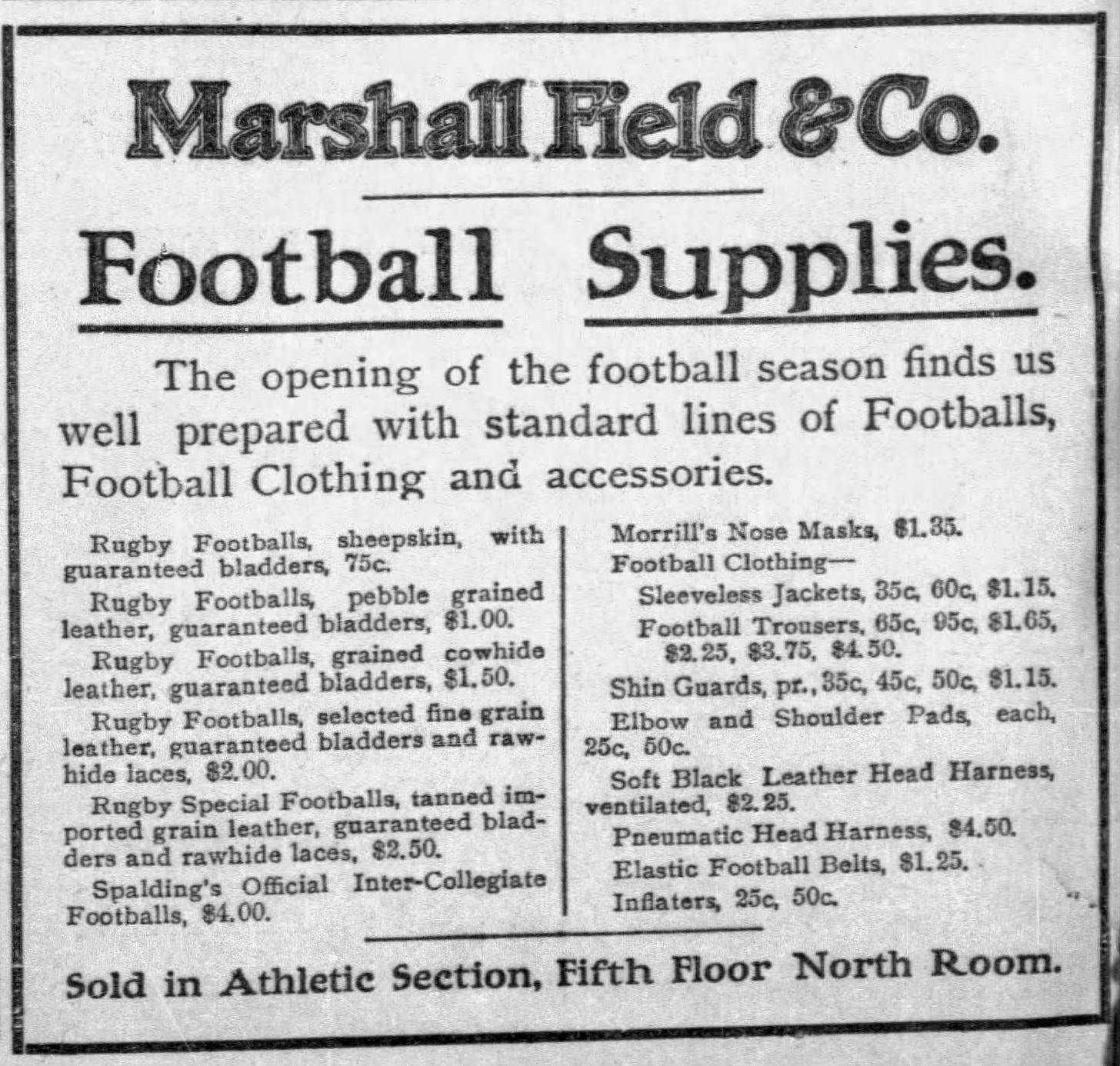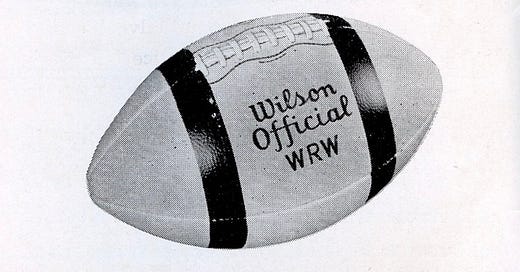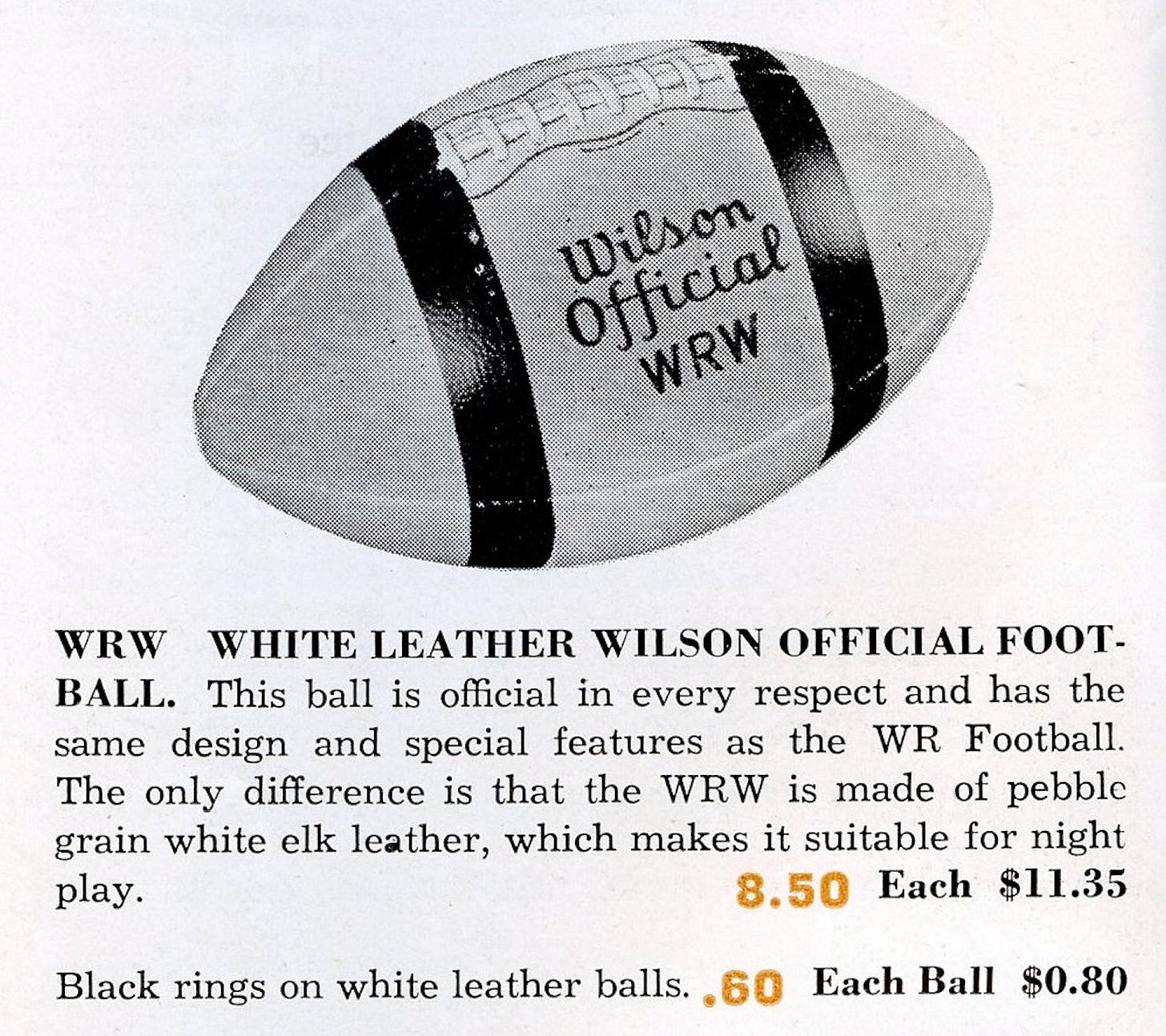Football manufacturing began in the 1820s in England in shops owned by the sort of men seen in The Christmas Carol or other Dickens novels. In addition to shoes and boots, they crafted highly-quality leather rugby and soccer balls.
After American football broke from rugby, they no longer needed to use English rugby balls, so they switched to balls made in America by Spalding of Chicago. Spalding produced balls in large quantities in factories and matched the volume with a national distribution system. Soon, Spalding offered products in every sport imaginable, and as the market for sporting goods products grew, Spalding and its competitors became good-sized businesses.
Most early sporting goods firms and their suppliers came out of the meatpacking or leather industries since leather was the core material used for footballs and football equipment generally. The industry transitioned after WWII toward plastics and other synthetic materials, so many firms entering the industry since then have originated in those industries.
As we will see in this chapter, rubber and plastic footballs competed with leather for several decades, seeking to become the dominant football cover. Still, leather held them off and remains the unrivaled cover for footballs today.
Pigskin, Sheepskin, Horsehide, and Cowhide
In the 1860s and 1870s, the English used the term "pigskin" to describe polo and steeplechase saddles, not rugby or soccer balls. Americans adopted "pigskin" as a nickname for the ball and the game more broadly by the mid-1880s despite the rugby balls imported from England having rubber bladders by the time American colleges began playing organized football.
It is a common belief that cowhide or steerhide have covered footballs from the beginning. While largely accurate, sheepskin, horsehide, and pigskin once covered lower-priced footballs as well. The 1898 advertisement below includes a 75-cent sheepskin ball, while the highest-priced ball, a cowhide-covered Spalding, sold for $4.00.

Sheepskin balls regularly appeared in ads as a lower-priced option until WWI. They were so inexpensive that boys' clothing retailers often gave them away to anyone purchasing a boys' suit or coat. There are pre-1900 ads for inexpensive “pigskin footballs” as well, though it is unclear whether the ads refer to the leather, the bladder, or are simply a redundancy. In addition, Wilson used elk leather for their late 1930s and early 1940s white footballs, presumably because elk leather was lighter-colored.
Keep reading with a 7-day free trial
Subscribe to Football Archaeology to keep reading this post and get 7 days of free access to the full post archives.




